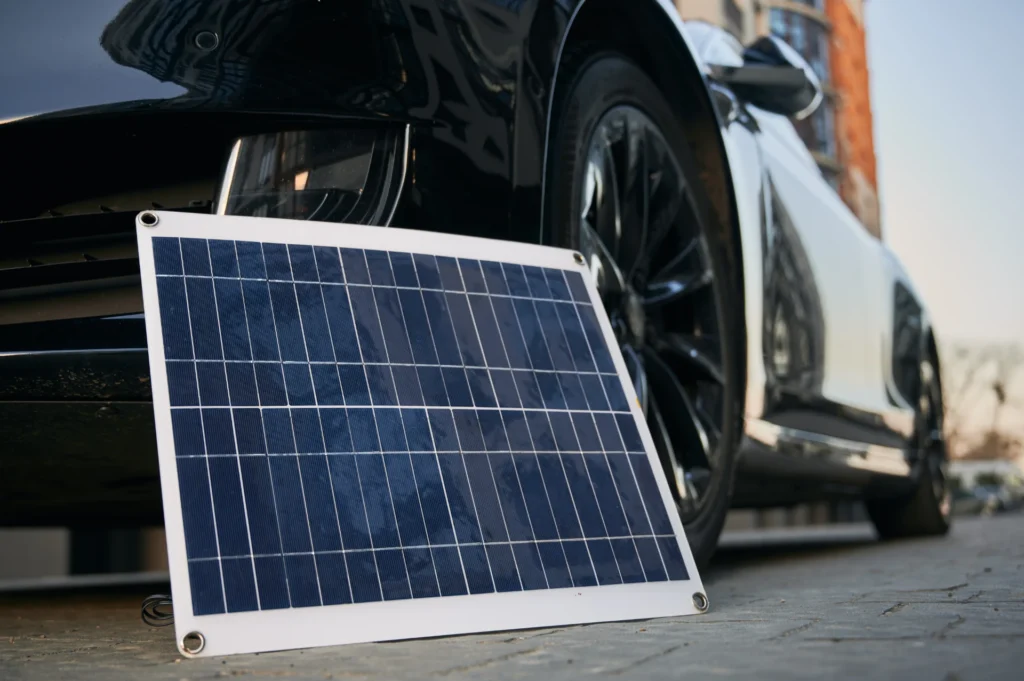
The utilization of renewable energy sources such as solar power is on the rise, and with it comes the need for efficient storage systems. While battery technology has advanced significantly in recent years, there remains a gap between energy production and consumption that presents challenges for grid stability. However, electric vehicles (EVs) present an opportunity to bridge this gap through Vehicle-to-Grid (V2G) technology.
V2G technology allows EV batteries to consume energy while driving and store excess energy from renewable sources such as solar power. This innovative approach offers benefits beyond traditional grid stabilization methods by enabling consumers to participate in demand-side management actively. But how does V2G work, what types of EVs can be used for V2G, and what safety considerations should be considered? In this article, we will explore these questions and more to help you understand whether your EV can be used for storing excess solar energy using V2G technology.
Vehicle-to-Grid (V2G) technology utilizes an electric vehicle’s battery to store excess solar energy, which can then be fed back into the grid during peak hours. This innovative technology allows EV owners to rely on their vehicles for transportation and use them as a power storage source. V2G implementation challenges include technical issues such as standardization, compatibility, and safety concerns.
One of the primary challenges with V2G implementation is establishing standardized communication protocols between EVs and the grid. Without standardization, it would be difficult for different EV models to communicate with charging stations and utility companies. Compatibility issues also arise when V2G systems require specific hardware and software configurations that may not be available in all EV models.
Another challenge faced by V2G technology is ensuring safety measures are in place during energy transfer from an EV’s battery back into the grid. This involves managing voltage levels and current flow to prevent any damages or accidents from occurring. Additionally, there may be concerns regarding how frequently using an EV’s battery for V2G could impact its lifespan.
Despite these challenges, research has shown that V2G technology positively impacts the environment and electricity costs. By storing excess solar energy in an EV’s battery during off-peak hours, utilities can reduce reliance on fossil fuel-based power generation methods during peak hours when demand is high. Moreover, studies have demonstrated that regular use of V2G has minimal impact on an EV’s battery life due to advancements in battery management systems that regulate charging patterns and mitigate degradation over time.
Overall, Vehicle-to-Grid (V2G) technology presents exciting opportunities for renewable energy integration into our daily lives while simultaneously reducing greenhouse gas emissions at a lower cost than traditional methods of electricity generation. Despite some implementation hurdles like standardization issues and safety concerns related to energy transfer from batteries back into grids, recent research indicates that the benefits of V2G implementation outweigh the challenges.
Vehicle-to-Grid (V2G) technology allows electric vehicles (EVs), equipped with bi-directional charging capabilities, to store energy during off-peak hours and use it during peak hours when electricity demand is high. This technology enables EV owners to charge their cars when electricity rates are low and sell the excess stored energy back to the grid during peak hours for a profit. V2G technology incentivizes EV owners to participate actively in the energy market by allowing them to contribute towards a more sustainable future.
During low electricity demand, charging an electric vehicle’s battery can be done during off-peak hours to take advantage of cheaper electricity rates. This charging method, also known as smart-charging, offers several benefits for the EV owner and power grid. Firstly, by charging during off-peak hours, the EV owner can save on their electricity bill as the cost per unit of energy is lower than during peak hours. Secondly, smart-charging helps reduce strain on the power grid during peak periods, leading to better infrastructure utilization.
To fully utilize this technique effectively, it is important to understand its impact on EV battery lifespan. Charging an electric vehicle’s battery too frequently or at a high voltage level can lead to early wear and tear, reducing lifespan. However, a well-designed smart-charging system can monitor and control charge rate and frequency, ensuring battery lifespan is not compromised. Additionally, some EV manufacturers offer features such as scheduling software that enables users to program when their car should charge based on their daily usage patterns. Overall, charging an electric vehicle during off-peak hours offers significant financial benefits while contributing positively towards better utilizing existing power grid infrastructure.
The optimization of electricity usage during peak hours can be achieved by utilizing energy stored in electric vehicles. As more households adopt solar panels to generate their electricity, there is a growing need for effective storage solutions to store excess energy generated during the day for use at night or during peak hours when solar production is low. Electric vehicle batteries can store this excess solar energy and release it back into the grid or household during peak hours.
Using EV battery for home energy has several benefits. Firstly, it reduces reliance on centralized power plants, which often rely on fossil fuels and produce greenhouse gas emissions. Secondly, it allows homeowners to optimize their energy usage by storing excess energy and using it when needed. This saves money and helps reduce strain on the grid during peak hours, which can lead to blackouts or brownouts. Furthermore, as more people adopt electric vehicles, the potential for using EV batteries as a storage solution increases, leading to a more sustainable and reliable energy system.
One potential solution to reduce strain on the grid and increase the reliability of the energy system is by selling excess electricity generated from renewable sources back to the grid. This process involves using an inverter that converts DC power produced by solar panels into AC power, which can be used for various household appliances or sold back to the grid. Selling excess solar energy helps reduce reliance on non-renewable energy sources and provides homeowners with a source of income.
Battery storage solutions provide another option for dealing with excess solar energy. Instead of selling it back to the grid, homeowners can store it in batteries for later use when there is no sunlight or peak demand hours. This way, they can avoid paying higher prices during peak hours and rely less on non-renewable energy sources. Additionally, battery storage solutions can help reduce pressure on the grid by storing excess solar energy and releasing it when demand is high. Overall, selling excess solar energy and utilizing battery storage solutions significantly reduce reliance on non-renewable sources and increase overall efficiency in our energy systems.
The benefits of Vehicle-to-Grid (V2G) technology are many and varied. Firstly, V2G can save EV owners money on their electricity bills by allowing them to sell excess energy stored in their car’s battery back to the grid during peak demand periods. Secondly, V2G helps stabilize the electrical grid by providing a reliable energy source during high demand or power outages. Lastly, V2G contributes to reducing carbon emissions by facilitating the integration of renewable energy sources into the electric grid and reducing reliance on fossil fuels.
Implementing a system that allows excess solar energy to be stored in an electric vehicle’s battery can be a cost-effective solution to reduce electricity bills. This method involves using solar panels to generate renewable energy and maximizing energy efficiency in the home. The surplus power generated by these panels can then be directed to the EV’s battery for storage. When the demand for electricity increases during peak hours, instead of drawing power from the grid, the stored energy in the EV’s battery can be utilized.
The following list highlights some benefits of using an EV’s battery to store excess solar energy:
Overall, incorporating an electric vehicle’s battery to store excess solar energy presents a compelling option for those looking to reduce costs while also promoting environmental responsibility and flexibility.
Transition: Besides saving money on electricity bills, using an electric vehicle’s battery to store excess solar energy can also help stabilize the grid. This process is known as vehicle-to-grid (V2G) technology, and it has several benefits for renewable energy integration.
Current Subtopic: Benefits for Renewable Energy Integration and Impact on EV Battery Lifespan
One of the biggest advantages of V2G technology is its ability to provide stability to the electrical grid during times of high demand. By utilizing stored energy from EV batteries, this technology helps reduce peak demand on the grid and promotes a more even distribution of power throughout the day. This helps prevent blackouts and ensures that renewable energy sources are effectively utilized without causing any fluctuations in power supply.
Moreover, using EV batteries for V2G purposes can also positively impact their lifespan. Since these batteries are designed to last several years before needing replacements, they often outlast the vehicles’ lifespan. Using them as storage devices for solar energy gives them a second life and increases their overall value. This reduces waste while promoting sustainable transportation and renewable energy practices.
Reducing carbon emissions is critical to sustainable development, and V2G technology can significantly contribute to achieving this goal. Allowing electric vehicles (EVs) to use their batteries as energy storage allows excess solar power generated during the day to be stored and used during peak demand periods. This reduces reliance on non-renewable energy sources, such as coal or natural gas, often used to meet high electricity demands.
Through V2G technology, EV owners become active participants in reducing carbon emissions by contributing to grid stability and providing additional renewable energy solutions. The ability to store solar power in EV batteries helps reduce greenhouse gas emissions and mitigates the intermittency issue associated with renewable energy sources. With more renewable energy solutions being implemented worldwide, V2G technology has the potential to play a key role in ensuring a sustainable future for generations to come.
Various types of electric vehicles, including plug-in hybrid electric vehicles (PHEVs) and battery electric vehicles (BEVs), can be used for vehicle-to-grid (V2G) applications. V2G technology allows EV owners to use their vehicle batteries as a source of energy to power homes or businesses during peak demand times or when grid disruptions occur. This process provides backup power and helps reduce carbon emissions by using stored renewable energy.
To utilize V2G technology effectively, it is essential to consider the EV battery capacity and solar panel efficiency. BEVs typically have larger battery capacities than PHEVs, making them more suitable for storing excess solar energy. Additionally, high solar panel efficiency ensures more energy is produced and stored in the EV’s battery during sunlight hours. In turn, this stored energy can be used later when required.
Another factor to consider when choosing an EV for V2G applications is its charging capabilities. Fast-charging capable cars are better suited for V2G because they can quickly charge back up after discharging their battery into the grid. Also, V2G-capable EVs must have bi-directional charging capability to receive and transmit electricity from their batteries.
Various types of EVs can be used for V2G applications with different strengths depending on factors such as battery capacity and solar panel efficiency. The potential benefits of utilizing V2G include reducing carbon emissions by using stored renewable energy and providing backup power during peak demand times or grid disruptions. As technology advances, we may see further advancements in V2G capabilities that could lead to even more significant reductions in carbon emissions while offering greater freedom in managing our energy needs through our transportation devices.
To effectively utilize Vehicle-to-Grid (V2G) technology, it is crucial to consider the installation requirements for bi-directional charging and fast-charging capabilities of Electric Vehicles (EVs). EVs compatible with V2G must have a battery capacity that allows for bidirectional charging, which means that energy can flow both in and out of the vehicle’s battery. Additionally, these vehicles should be able to charge quickly to return power to the grid during peak demand periods.
To install V2G technology, an on-site energy management system is needed. This system communicates with the vehicle’s charger and controls its operation when excess solar energy is available or the grid needs additional power. The system also monitors the state of charge of the EV’s battery and ensures that it does not discharge beyond its safe operating limits or harm its longevity.
Another factor to consider when installing V2G is compatibility with solar panels. To store excess solar energy in an EV’s battery, a solar panel system must also be installed on-site. The panel should be sized appropriately according to how much electricity will be used by both household appliances and electrical vehicles. In addition, inverters must be installed alongside solar panels to convert DC electricity generated by panels into AC for use inside homes.
Overall, an appropriate installation process must take place to make use of EVs as storage units for excess solar energy using V2G technology. This includes ensuring a sufficient battery capacity for bidirectional charging and fast-charging capabilities while having an on-site energy management system that integrates well with any existing solar panel infrastructure at home or business premises. Moreover, compatibility between components such as inverters and chargers cannot be overlooked. All these pieces play critical roles in making this process work efficiently without causing damage or reducing efficiency over time due to improper usage practices by end-users.
When implementing Vehicle-to-Grid (V2G) technology, one critical aspect is ensuring proper safety measures. This is particularly important regarding battery safety, as EV batteries can store a lot of energy that could potentially be hazardous if not handled properly. Therefore, it is essential for individuals and organizations looking to use an EV battery as a solar energy storage device to consider important considerations.
Firstly, it is vital to ensure that the battery being used for V2G technology has undergone thorough testing and certification. This will help ensure that the battery meets industry standards for safety and performance, reducing the risk of accidents or malfunctions. Appropriate safeguards should be put in place at each point in the system where electricity flows through wires or connectors.
Secondly, regular maintenance checks on the battery should be conducted by qualified professionals aware of potential hazards and safety protocols related to working with high-voltage systems. These checks may include monitoring temperature levels within the battery pack, inspecting connections between cells or modules for signs of damage or corrosion, and ensuring that all cooling systems function correctly.
Fire safety is another crucial consideration when using an EV battery for V2G technology. Proper ventilation should be provided at all times to prevent heat buildup within the battery pack which could lead to fires or explosions. Additionally, fire suppression equipment such as extinguishers or sprinkler systems should be installed in areas where batteries are stored or charged.
In summary, important considerations must be considered when using an EV’s battery as a solar energy storage device. Battery safety is paramount in this process due to its capacity for storing large amounts of energy that can pose risks if not handled appropriately. Testing and certification of batteries used for V2G technology and proper maintenance checks by qualified professionals can minimize these risks while improving performance efficiency and overall reliability of these innovative renewable energy solutions.
The cost of purchasing and installing equipment for solar energy storage can be a significant investment, but the potential savings and profits can outweigh the initial expenses. The long-term investment in solar energy storage may also provide financial benefits by reducing reliance on traditional grid electricity and increasing energy independence. A technical, analytical approach to evaluating these costs and returns is necessary to make informed decisions about investing in solar energy storage.
Equipment costs for utilizing an electric vehicle’s battery as a storage solution for excess solar energy may be a significant barrier for those seeking to adopt this technology. Compared to traditional home battery storage systems, EV batteries are larger and require additional equipment such as a bi-directional inverter and control software to manage the flow of electricity between the battery, solar panels, and the home’s electrical system. These additional components can significantly add to the overall cost of implementing an EV battery storage system.
Installation requirements also play a critical role in determining equipment costs. Unlike traditional home battery systems that can be installed indoors or outdoors, EV batteries typically require outdoor installation due to their size and ventilation needs. This means additional expenses for installing concrete pads or other structural support systems required for outdoor installations may be incurred. Safety considerations must also be considered when installing an EV battery storage system, which may require hiring a licensed electrician or contractor with specialized knowledge.
Potential savings and profits from utilizing electric vehicle batteries as a storage solution for solar energy can provide significant financial benefits for homeowners and businesses. In regions with high electricity costs and favorable net metering policies, this technology could substantially reduce monthly utility bills and overall energy expenses. Additionally, the potential for selling excess stored energy back to the grid during periods of high demand creates an opportunity for revenue generation.
Furthermore, using EV batteries as a solar storage solution promotes energy independence by reducing reliance on traditional power sources. This technology allows individuals and businesses greater control over energy consumption, production, and distribution. By using renewable sources like solar power and EV battery storage systems, consumers can become less dependent on fossil fuels and contribute to a more sustainable future. Overall, the financial benefits and increased autonomy make EV battery storage solutions an attractive option for those seeking both economic advantages and environmental responsibility.
Investing in electric vehicle battery technology for long-term use as a storage solution for renewable energy sources has become more attractive than ever. Many homeowners and businesses are exploring using their EV batteries to store excess solar energy, reducing their reliance on grid power and minimizing their carbon footprint. This represents a significant shift towards sustainable and cost-effective energy solutions that provide both financial and environmental benefits.
One of the key factors driving this trend is the potential for high returns on investment (ROI) over the long term. By using EV batteries as a storage solution for renewable energy sources such as solar panels, homeowners and businesses can reduce their electricity bills, earn credits or payments from utility companies for excess power fed back into the grid, and benefit from government-wide tax incentives. Moreover, they can significantly reduce their environmental impact by reducing greenhouse gas emissions associated with conventional sources of electricity generation. Overall, investing in electric vehicle battery technology for long-term use as a storage solution represents a smart choice that can deliver substantial financial and environmental benefits in the years ahead.
Government policies and programs have been put in place to encourage the use of electric vehicle batteries to store excess solar energy. These initiatives aim to increase the adoption of renewable energy while reducing carbon emissions, thereby facilitating long-term sustainability. Exploring eligibility, limitations, and benefits of current government programs for EV solar storage is crucial for individuals interested in utilizing this technology.
One program that encourages EV owners to utilize their batteries for solar storage is the Federal Investment Tax Credit (ITC). This program allows homeowners to claim a tax credit equal to 26% of the total cost of installing a solar energy system, including battery storage. Additionally, several states offer incentives and rebates towards purchasing an electric vehicle or installing a home battery system.
Real-life examples of EV owners successfully utilizing excess solar energy can inspire others looking to reduce their reliance on traditional electricity sources. For instance, Tesla’s Vehicle-to-Grid (V2G) technology allows users to feed back excess power from their car’s battery into the grid during peak demand periods. By doing so, they can earn credits that offset their electricity costs or generate revenue.
Various government incentives and programs are available for individuals interested in using their electric vehicle batteries to store excess solar energy. These initiatives promote sustainable practices and provide financial benefits for homeowners willing to invest in renewable technology. Real-life examples demonstrate how these technologies can be successfully implemented while contributing towards long-term environmental goals.
The implementation of Vehicle-to-Grid (V2G) technology has the potential to revolutionize the energy industry by allowing electric vehicles to function as mobile power plants. This innovation is expected to contribute towards grid stability and resilience, ultimately enabling a more efficient energy distribution. However, V2G integration challenges remain a significant obstacle hindering widespread adoption.
One challenge in V2G integration is ensuring compatibility between electric vehicles and the existing grid infrastructure. The technical specifications of EV batteries must align with the requirements of the grid operators to enable seamless energy transfer. Additionally, battery degradation caused by frequent charging and discharging cycles during V2G operations can shorten the lifespan of EV batteries, making it essential to develop strategies for battery management and maintenance.
Another challenge lies in regulating market dynamics. The pricing mechanisms for energy traded through V2G systems are yet to be standardized or regulated adequately. Without proper regulation, price volatility could lead to an imbalance in supply and demand, negatively impacting vehicle owners and grid operators.
Despite these challenges, current research suggests that V2G adoption rates will likely increase significantly over time. Technological advancements in battery management systems and increased awareness about renewable energy sources will be crucial in driving this trend forward.
While several challenges exist with integrating V2G technology into our current infrastructure, its benefits cannot be overstated. As we move towards an increasingly sustainable future where renewable energy sources play a more significant role than ever before, we must continue exploring ways to overcome these obstacles to leverage this innovative technology effectively.
In conclusion, Vehicle-to-Grid (V2G) technology presents a promising solution to the challenges of storing excess solar energy. This innovative approach allows electric vehicles (EVs) to serve as transportation and storage units for renewable energy. The benefits of V2G technology are numerous, ranging from reduced carbon emissions and increased grid stability to potential cost savings for EV owners.
Despite the various advantages that V2G technology offers, there are some installation requirements and safety considerations that need to be taken into account. These include ensuring compatibility between the EV and the charging station, proper installation by certified professionals, and adherence to safety guidelines during operation. Additionally, while government incentives and programs can help offset some of the costs associated with V2G implementation, it is important for individuals and businesses to carefully assess their potential return on investment.
As V2G technology continues to evolve and gain traction in the market, its future looks promising. With advancements in battery technology and improved infrastructure support from governments worldwide, we can expect more widespread adoption of this innovative concept in the coming years. Ultimately, it is clear that V2G has tremendous potential in transforming how we generate and store energy for a cleaner, more sustainable future.
The capacity limitations of an EV battery to store excess solar energy depend on factors such as the size and age of the battery, available charging infrastructure, and electricity demand. Technical analyses suggest that EV batteries can provide a viable solution for energy storage but require careful management to avoid damaging the battery’s lifespan.
The deployment of vehicle-to-grid (V2G) technology is limited by the battery capacity and charging capabilities of EV models. Not all EVs are suitable for V2G technology, as it requires specific hardware and software to enable bidirectional power flow between the grid and EV batteries.
If an EV battery is fully used for V2G purposes, alternatives for driving include recharging or utilizing battery swap options. However, these options may limit the vehicle’s range and require additional time and resources.
EV batteries used for V2G technology require additional maintenance to ensure optimal performance and longevity. Factors such as frequent charging/discharging cycles can lead to battery degradation, thereby reducing V2G efficiency. However, proper monitoring and maintenance can mitigate these effects.
The lifespan of an EV battery can be impacted by V2G technology, which involves using the battery for energy storage. Optimal usage can help maintain battery health, but proper monitoring and maintenance are required to ensure longevity.

How To Know If My Solar Compatible With Electrical Setup? Installing a solar panel system is an excellent way to reduce reliance on traditional electricity
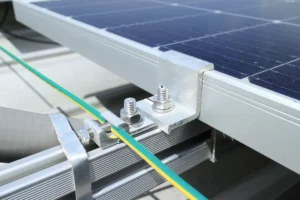
How Do I Ensure That My Solar Panel System Is Properly Grounded? Properly grounding a solar panel system is crucial to ensure safety, optimize performance,
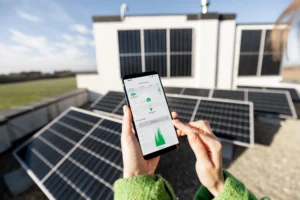
Can I Monitor The Performance Of My Solar Panel System Remotely? Solar energy is becoming an increasingly popular alternative to traditional sources of electricity. With

What Is The Difference Between Solar And Photovoltaic? Solar energy is a topic that has been gaining more attention in recent years as people become
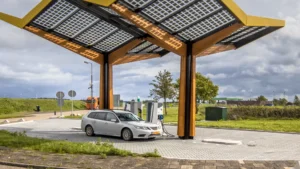
Can I Use Solar Panels To Power My Electric Vehicle? Can I use Solar Panels To Power My Electric Vehicle? The rise of electric vehicles
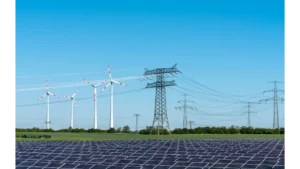
Can I Still Use Electricity From The Grid If I Have Solar Panels? Can I Still Use Electricity From The Grid ? As more and